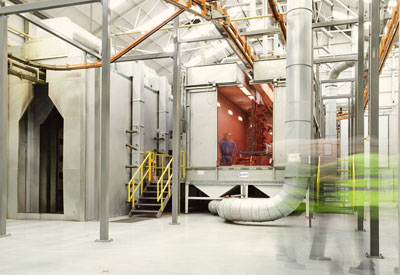Reduce Your Waste & Emissions
Reducing your waste can lead to significant cost savings as you pay for that material multiple times. Additionally, reducing your emissions not only reduces regulatory requirements, but also makes your facility safer for your employees. Some tips for reducing waste and emissions include:
- Incorporating more efficient procedures and practices
- Upgrading to more efficient equipment
- Using less hazardous materials for workers and the environment
- Implementing Design for the Environment into product design
Pollution Prevention Planning
The Minnesota Guide to Pollution Prevention Planning has been developed by MnTAP and MPCA to help companies comply with the Minnesota Toxic Pollution Prevention Act. The Guide provides a step-by-step process for identifying waste in your facility and forming a pollution prevention plan to address those wastes. How your company prepares its P2 plan will be related to your culture and the way you implement major projects.
Company Examples
The following companies have reduced their waste and emissions and are enjoying the benefits of lower costs and fewer regulations.
- K-Bar Industries (2002). This company manufactures metal outdoor-maintenance power equipment, shop equipment and parts and paints over paints over 3,000 parts/year using powder coating system. Through improved inspection of reject parts, increased operator awareness, process changes, and an upgraded paint system, the company saved $44,000 annually and reduced reject parts by 50%.
- Marathon Ashland (1998). Through an intern project, the company minimized solvent-based cleaning by installing new cabinet aqueous spray washer and eight new parts washers with filtration, using terpene first followed by solvent-based cleaner for final cleaning, and substituting foam cleaner with greater contact time and less water clean-up. In all, 40 gallons of chlorinated solvents were eliminated annually and the company is saving $39,000 a year.
- Medtronic (2001). By implementing Design for the Environment strategies into their product design, Medtronic is able to reduce waste and be more efficient.
Resources for More Information
- MnTAP Source Article: Cutting Wastes, Compliance Costs (2002)
- U.S. Environmental Protection Agency (EPA): Climate Change – Waste
- Pollution Prevention Resource Exchange (P2Rx)
